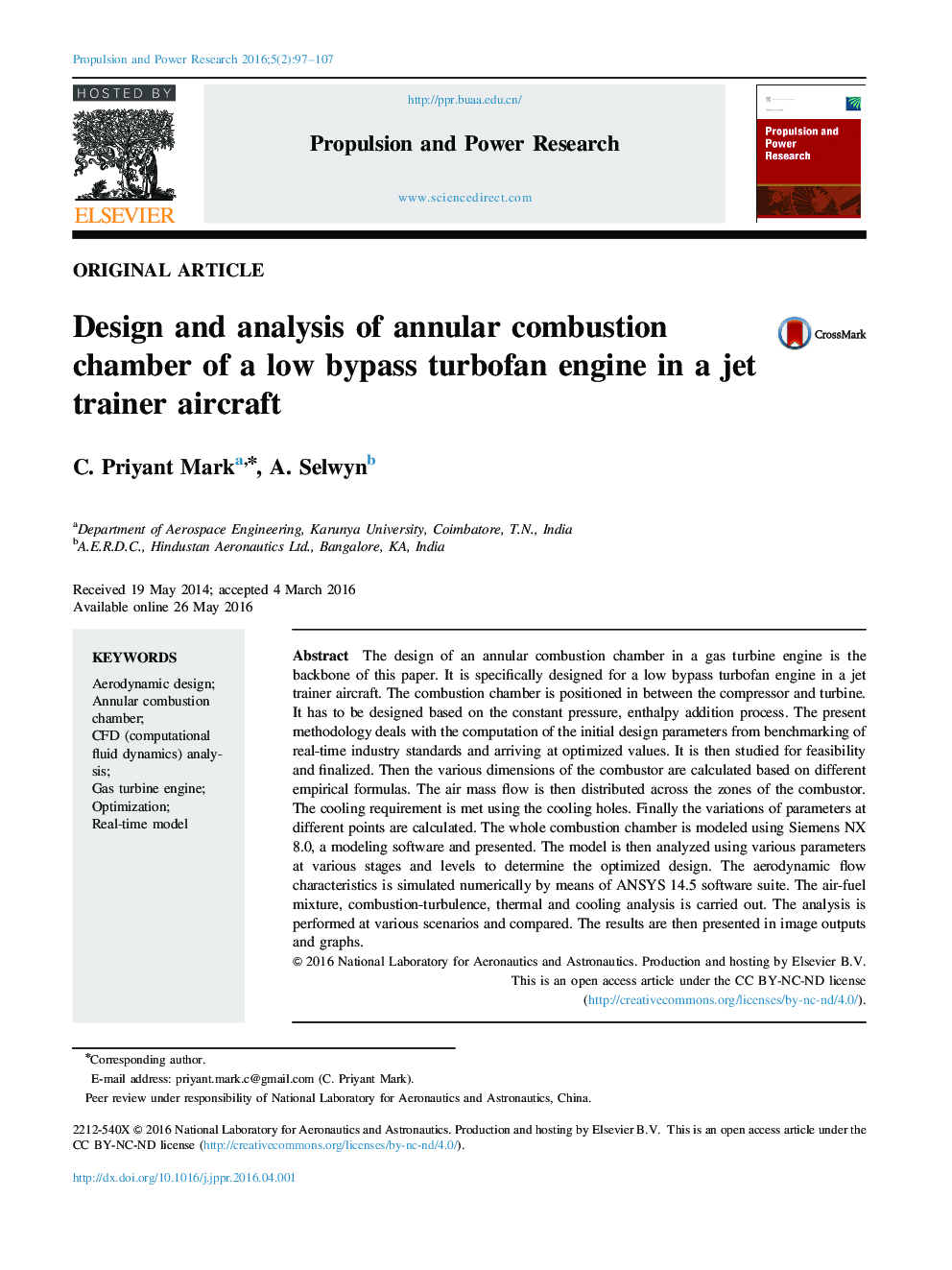| Article ID | Journal | Published Year | Pages | File Type |
|---|---|---|---|---|
| 1719596 | Propulsion and Power Research | 2016 | 11 Pages |
The design of an annular combustion chamber in a gas turbine engine is the backbone of this paper. It is specifically designed for a low bypass turbofan engine in a jet trainer aircraft. The combustion chamber is positioned in between the compressor and turbine. It has to be designed based on the constant pressure, enthalpy addition process. The present methodology deals with the computation of the initial design parameters from benchmarking of real-time industry standards and arriving at optimized values. It is then studied for feasibility and finalized. Then the various dimensions of the combustor are calculated based on different empirical formulas. The air mass flow is then distributed across the zones of the combustor. The cooling requirement is met using the cooling holes. Finally the variations of parameters at different points are calculated. The whole combustion chamber is modeled using Siemens NX 8.0, a modeling software and presented. The model is then analyzed using various parameters at various stages and levels to determine the optimized design. The aerodynamic flow characteristics is simulated numerically by means of ANSYS 14.5 software suite. The air-fuel mixture, combustion-turbulence, thermal and cooling analysis is carried out. The analysis is performed at various scenarios and compared. The results are then presented in image outputs and graphs.
